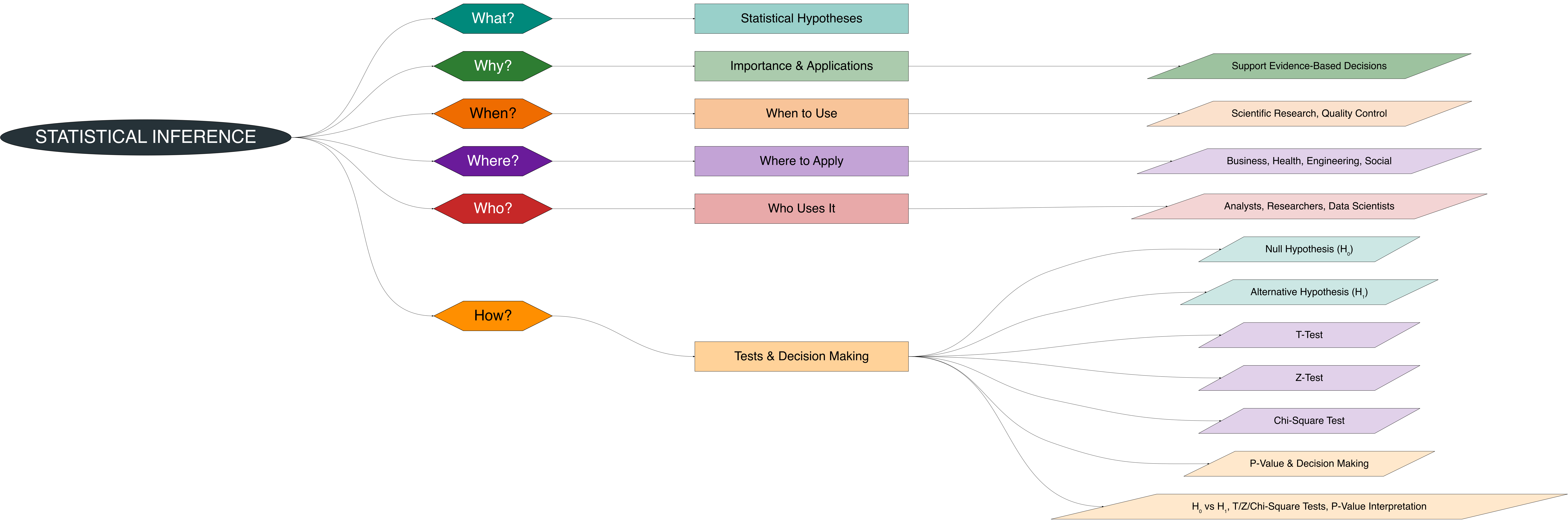9 Statistical Inference
Statistical inference is the process of drawing conclusions about a population based on information obtained from a sample. It allows researchers and analysts to make generalizations, predictions, and decisions under uncertainty, bridging the gap between observed data and the broader population.
The main components of statistical inference include:
- Estimation: Using sample data to estimate population parameters. This includes point estimates (single values) and interval estimates, such as confidence intervals.
- Hypothesis testing: Formulating a hypothesis about a population parameter and using sample data to assess whether there is enough evidence to support or reject it.
- Significance levels and p-values: Quantify the probability of observing data at least as extreme as the sample, assuming the null hypothesis is true.
Statistical inference relies on the principles of probability, Central Tendency, and Statistical Dispersion. For instance, measures of central tendency provide point estimates, while measures of dispersion influence the variability and standard errors used in inference.
Two common approaches to statistical inference are:
- Parametric inference: Assumes that data follow a specific probability distribution, such as the normal distribution. Examples include t-tests and ANOVA.
- Non-parametric inference: Makes fewer assumptions about the underlying distribution and can be applied to ordinal or non-normal data. Examples include the Wilcoxon rank-sum test and the Kruskal-Wallis test.
Visual representations, such as confidence intervals, error bars, and distribution curves, help communicate the results of inference clearly. Mastery of statistical inference equips readers to make evidence-based decisions and draw valid conclusions from sample data, forming the foundation for advanced analyses in research, quality control, and predictive modeling [1]–[3].

